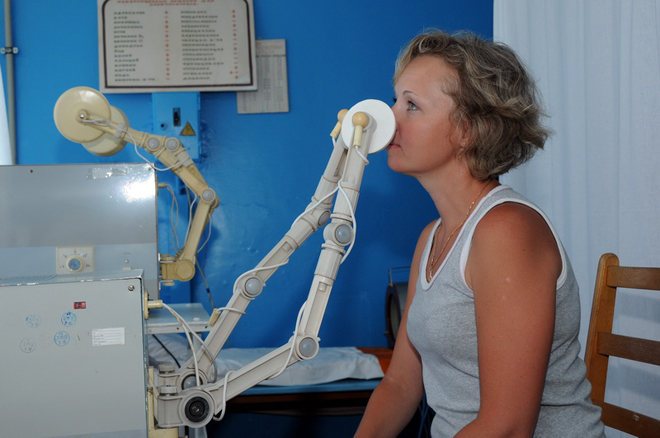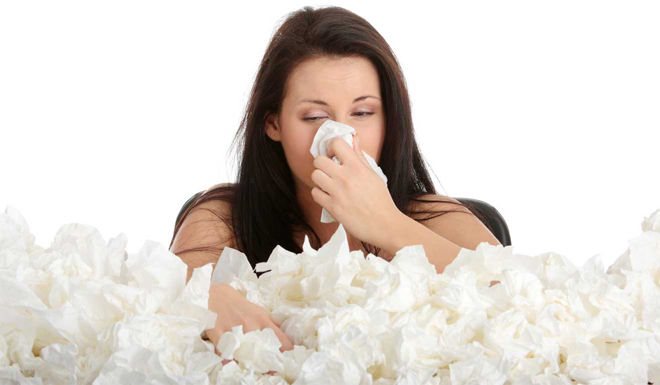When snot flows like a stream, it irritates any person much more than a regular runny nose with thick discharge. This usually occurs due to infection of the nasal mucosa, leading to the development of edema. The nose is the most important organ. It performs many functions, including cleaning the inhaled air from various particles. If a lot of water flows from the nose, these functions are disrupted and various pathological conditions can occur.
Causes of runny nose
To cope with pathology, it is very important to determine the causes of its development.
To do this, you need to analyze the color, smell and consistency of the secretion. The shade of mucus helps determine the nature of the inflammation and the stage of its development. Liquid secretion is observed with such anomalies as sinusitis, various forms of rhinitis, inflammatory lesions of the paranasal sinuses, and allergies.
To establish the correct diagnosis, you should study the nature of the secretion:
- ARVI . In the initial stages of viral infections, a runny nose, like water, can appear quite unexpectedly. After a certain time, the secretion acquires a thicker consistency and causes a slight burning and itching in the nose. Then a feeling of stuffiness appears. This symptom may persist for several weeks. To cope with it, you have to use appropriate medications.
- Allergy . With allergic rhinitis, snot of a liquid consistency constantly flows. This usually occurs during specific periods of time. To cope with the disease, it is important to avoid contact with allergens or use antihistamines. Allergies can be characterized by swelling, lacrimation, and hyperemia.
- Cold . In this case, liquid and transparent snot is released all the time. In addition, hyperemia and pain in the throat may occur, the temperature increases, and chills appear. To prevent the progression of the disease, you need to take the necessary measures in a timely manner. If you have good immunity, there is no need to treat this type of rhinitis - it will quickly go away on its own.
- Sinusitis . If the discharge acquires a yellowish tint, this indicates an inflammatory process in the body. Most often, sinusitis or sinusitis leads to such disorders. This condition poses a serious danger, so its treatment should not be delayed. When a brown secretion appears, complex forms of sinusitis can be suspected. The color of the mucous discharge is due to the mixing of pus and blood from ruptured capillaries.
- Deformation of the nasal septum . Discharge from one nostril that is dark in color may indicate a curvature of the bridge of the nose. It may be a consequence of damage to the septum or is a consequence of unsuccessful operations.
Treatment of a runny nose
Treatment is prescribed by an ENT doctor based on the examination results. It includes the collection of complaints, anamnesis of life and illness, general examination and rhinoscopy. Sometimes additional research methods may be prescribed to answer the question of why water flows from the nose.
After completing diagnostic measures, the doctor receives information on how to stop the snot that runs like a stream. General recommendations usually include:
- bed rest for the first few days of illness;
- plenty of warm, preferably alkaline drinks;
- the use of various warming procedures.
When clear water flows from the nose, inhalations are prescribed. If the disease occurs with hyperthermia, they are used with caution, and the use of antipyretics is also possible.
Inhalation is an effective remedy in the fight against rhinitis
Local treatment
Such treatment includes vasoconstrictor drops and sprays, as well as similar dosage forms with antibacterial and anti-inflammatory components. Among well-helping remedies, one of the first places is occupied by Protargol and Collargol drops, which have astringent, antimicrobial and anti-inflammatory effects.
Quite useful folk advice is to maintain a humid microclimate in the room where the patient is located; this can be done by hanging wet towels.
If there is a lot of mucus flowing from the nose, it is very important to blow it out in a timely manner, and it is very important to do it correctly. This is because the contents of the nasal cavity can enter the sinuses or inner ear. It is necessary to perform the procedure with a half-open mouth, while each nostril is blown separately. You should not strain too much.
Other therapeutic measures are carried out depending on the type of rhinorrhea. Complex treatment is usually used, including cryotherapy, physical therapy, massage, novocaine blockades, heating and laser treatment. In case of low effectiveness of these measures, surgical intervention may be prescribed.
Medicines
Atrophic rhinitis involves local treatment with drugs that help improve trophism of the vessels of the nasal mucosa. Alkaline solutions and furatsilin ointment are best suited. In order to increase the body's resistance, protein therapy, Cocarboxylase, aloe, and vitamin complexes are prescribed. Physiotherapeutic treatment is also necessary, among which UHF is preferred.

For allergic rhinitis, it is very important to eliminate the allergen that caused the snot. It is necessary to completely stop the patient's contact with him. Drug therapy includes antiallergic drugs, mast cell membrane stabilizers, and in some particularly severe cases, hormones are prescribed. The nasal mucosa is irrigated with saline solutions.
It is necessary to carry out detoxification therapy of the body, which can alleviate the patient’s condition.
Associated symptoms
In addition to heavy nasal discharge, there is a risk of additional symptoms.
These include a general deterioration in a person’s condition. When nasal congestion occurs, a decrease in the sense of smell and impaired respiratory function occur. Sneezing, fever, and watery eyes often occur. Sometimes very severe rhinitis is observed. There is a sensation of itching and burning in the nasal cavity, which causes serious discomfort to the patient. Swelling of the mucous membrane may also be observed. This condition interferes with the full outflow of fluid from the nasal sinuses, which creates a risk of developing sinusitis.
How to treat snot running like a stream
If a person has water pouring from his nose, he should contact an otolaryngologist as soon as possible and undergo the necessary examinations. Diagnostics includes studying the clinical picture, analyzing the pathological history, examining and performing rhinoscopy. In some situations, additional studies are prescribed to help determine the causes of the disease.
Based on the diagnostic results, the doctor prescribes therapy. Most often, experts recommend following the following rules:
- on the first day, adhere to bed rest;
- drink plenty of fluids – preferably alkaline drinks;
- use warming procedures.
If the cause of rhinitis has not been established, inhalations will temporarily improve the patient's condition. This procedure can only be carried out as prescribed by a specialist until test results are received. It is important to consider that when the temperature rises, inhalation is prohibited.
To carry out the procedure, you can use a decoction of St. John's wort or chamomile. You can also put a little mint in the water or add a few drops of eucalyptus tincture. The vapors from the decoction should be inhaled for 10 minutes.
How to stop snot?? ? flow like a stream)))
Answers:
Valeria Antonova
Apply any vasoconstrictor drops (nazivin, xylene, etc. The cheapest ones cost about 30 rubles). Of course, they won’t cure a runny nose, but your nose will stop running and you’ll be able to breathe normally. Well, in order to cure it, you need to use something else. Well, or until it goes away on its own. Just don’t use vasoconstrictors for more than 5 days (after 5 days you begin to get used to the drops). Get well!
old countess
blow your nose
Andrey Borgia
Eat starch to thicken it
JUKA Z
This is a normal reaction of the body in general. You just need to blow your nose more often.
Kate
protargol-super drops
Nite_Pavel
Kalanchoe
Alexey Zaitsev
Rinse your nose often and blow your nose. If your sinuses are inflamed, you can lubricate them with 0.25% oxolinic ointment. There is also an old-fashioned way: boil potatoes and breathe in hot steam. And by the way, don’t get carried away with nasal drops, which constrict blood vessels. You can't use too many of them
Svetlana Koshka
Well, yes, if it’s urgent - with vasoconstrictors, to treat - Tafen nasal spray, for example. If you don’t need chemicals, you can also rinse with salt water several times a day so that it flows straight from one nostril, then from the other…. It's disgusting, but it also helps)
Natalya Rudneva
Maybe an allergy, take suprastin.
What medications to treat current snot
After receiving the test results, the doctor selects medications. Most often, snot, like water, requires the use of vasoconstrictor nasal drops, antiviral medications and anti-inflammatory drugs. In more serious cases, antibiotics cannot be avoided.
So, drug therapy for this condition may include the following components:
- To quickly eliminate rhinitis, doctors prescribe vasoconstrictor drugs. They allow you to cope with mucus, nasal congestion and have a beneficial effect on the condition of the nasal cavity. It is best to use well-known medications - otrivin, galazolin, naphthyzin. It is prohibited to use such substances for more than 5 days. Otherwise, there is a risk of dry nose and the development of medicinal rhinitis.
- If the pathology is of an allergic nature, antihistamines are prescribed. These are the means that will have the main effect. The most effective remedies include tavegil, cetrin, and claritin.
- If the runny nose is of bacterial origin, the patient is prescribed more complex therapy. To select the right drug, additional diagnostic studies are carried out to identify microflora. Doctors often prescribe combined drops - isofre or polydex. In advanced cases, systemic antibiotics must be used.
- When the temperature rises, the use of antipyretic drugs – paracetamol, ibuprofen – is indicated. Such products should be used only if the temperature exceeds 38 degrees.
In addition to the use of medications, it is very important to monitor the patient’s condition. He should drink plenty of fluids and eat right. Regular ventilation of the room and wet cleaning are of no small importance.
Causes of pathology
Usually, when a lot of liquid snot flows from the nose, the cause of this condition is a common cold. In science, this is called rhinorrhea, or rhinitis. Transparent discharge represents a protective reaction of the body to the introduction of foreign agents and indicates a disruption of normal processes in the upper respiratory tract.
When clear snot flows from the nose like water, the activity of other parts of the respiratory system is disrupted. This means that such a runny nose must be treated immediately, since it can later be complicated by other, more severe pathologies.
The most common cause of the development of a runny nose in adults and children is hypothermia. This period is characterized by a decrease in the protective properties of the body and is a favorable aid for the development of pathogenic microflora. Among the reasons, it should also be noted a decrease in immunity against the background of other inflammatory processes.

The snot flowing in a stream can be stopped if you stock up on a bunch of paper napkins
Physiotherapy products
With severe rhinitis, it is important to learn how to blow your nose correctly and systematically cleanse your nose.
Washing should be done at least 5 times a day. By cleansing the mucous membranes, it will be possible to cope with congestion and normalize the patient’s condition. To rinse the nose, you can use special solutions or decoctions of medicinal plants. It is necessary to blow out the mucus as carefully as possible, without making sudden movements.
If the cause of a runny nose is an infection or allergic rhinitis, the doctor may recommend complex therapy, which includes UHF, massage, heating and other procedures.
Folk recipes
In addition to medicines, it is quite possible to use folk remedies:
- One of the most effective methods is a hot bath with the addition of decoctions of medicinal plants. This procedure will also become an inhalation. To prepare a herbal decoction, you can use chamomile, sage, and calendula. To do this, a glass of dried raw materials is mixed with 1 liter of boiling water and left to infuse for 2 hours. Then the strained broth is poured into the bath. The duration of the procedure is 15-20 minutes. After completing it, you need to immediately go to bed, so it is best to take a bath before bed.
- To relieve swelling and cope with liquid discharge, you can do warm rubbing. For this purpose, you can use melted fat or camphor oil with the addition of essential oils - mint, juniper, eucalyptus. The chest should be thoroughly rubbed and wrapped in a warm towel. Lie down for at least half an hour. After completing the procedure, you should not go outside.
- To warm the body, improve blood circulation and stimulate the immune system, you can use ordinary mustard plasters. They can be applied to the chest and placed in warm socks.
- Warming up with a salt bag helps to quickly cope with swelling, eliminate the inflammatory process and activate the immune system. It must be heated in a frying pan and then applied to the bridge of the nose. Instead of such a bag, you can use a boiled egg or make a paraffin compress. The procedure must be performed as carefully as possible to prevent skin burns.
- To treat a runny nose, it is quite possible to use fresh Kalanchoe or aloe juice. These products have pronounced anti-inflammatory and antibacterial characteristics. Thanks to this, it will be possible to cope with the cause of rhinitis.
- An effective method of therapy is inhalation of onion and garlic vapors. To do this, the products should be crushed and placed in a flat container. Leaning over it, you should inhale the vapors. This must be done until the product runs out. Thanks to this procedure, it is possible to improve the removal of mucous secretions.
The nose is running heavily, tell me how to stop the runny nose?
Answers:
Yana YN
Two clothespins and step to the doctor!
Maria Romanova
In the nose Euphorbium for cough Gedelix.
She
I can tell you about one remedy, nelkarstvo ICQ 451601719
TAISIA
As they say, if you treat a runny nose, it will go away in seven days, and if you don’t treat it, then in a week. Good luck.
@@c
You should drink hot milk with honey at night before going to bed, you can also steam your feet in hot water - it helps! try
Sweet YYAAD!
1. Kalanchoe juice can be instilled into the nasal cavity, 3-4 drops every 4 hours, or lubricated 2-3 times a day in the nose. After a burning sensation, after 20-30 minutes, rhinorrhea intensifies slightly, then decreases to a minimum, while swelling of the mucous membrane decreases and nasal breathing improves. 2. Juice from the leaves of blood-red geranium is instilled 2 drops 3-4 times a day. 3. Calendula juice is instilled 3 drops 3-4 times a day. 4. Juice or infusion from coltsfoot leaves is instilled 2-3 drops 3-4 times a day. 5. Juice or infusion of St. John's wort is instilled 3-4 drops 2-3 times a day. The following preparations are obtained from the leaves of St. John's wort: imanin and novoimanin, aqueous solutions of which are recommended to be instilled 2-3 times a day
insurance
You should also go to the ENT, maybe it’s sinusitis... if so, then you won’t be able to get by with simple medications, you’ll have to get examined, just don’t wait, otherwise I was brought to the point of chronic illness by “self-medication”
die_beste
I sprayed it with FORNOS spray and it helped quickly.
Nikita
plug it with a cork
Personal Account Removed
I tried an antibiotic called Bioparox. In Kazan it costs about 250 rubles. It can be dripped into the nose and mouth. I liked it the most of all the drugs.
EUGENIYA
If you want to feel more or less better, then mix onion juice and a little water and drop it into your nose, it will tingle, but it will be effective, and if you are not lazy and do salt rinses at short intervals, the result will not take long...
Marina Agarkova
The juice of a living tree helped me, aloe juice can also help. And from the pharmacy: SANORIN
Alena S
If this is not an infectious disease, then try making hot compresses with a decoction of bay leaves. 2 packs of good bay leaves are poured into an enamel bowl with water to cover, and brought to a boil, then boil for 15 minutes. Two compresses (compress gauze or other soft, clean cloth folded several times the size of approximately one and a half of your palms in width and a palm in length), alternately soaked in hot broth, are applied to the forehead and nose area and wrapped under the nose, so that you breathe in vapors this decoction. Bay leaf is a strong antiseptic. You could just lie under a laurel bush on a hot day. And so create such an aedilia yourself.
jasmine
Warm up your maxillary sinuses with potatoes or eggs.
Preventive actions
To prevent the appearance of liquid nasal discharge, it is imperative to promptly treat inflammation of the respiratory system. Strengthening the immune system is of no small importance.
In the midst of epidemics, crowded places should be avoided. In addition, it is worth limiting communication with people who have a cold. It is not recommended to drink drinks that are too cold, as this can cause local hypothermia.
- To normalize the condition of the nasal mucosa, you need to perform systematic rinsing. The body should be strengthened gradually, starting with light physical exercise.
- Normalization of the diet is of great importance - it must contain a sufficient amount of vitamins and microelements. In addition, food should have a balanced composition in terms of the amount of proteins, fats and carbohydrates.
- It is very important to systematically wet clean the room and ventilate it. Thanks to this, it will be possible to minimize contact with dust, which has pronounced allergenic properties, and cope with the spread of infectious agents.
Liquid nasal discharge is quite common. This symptom may indicate the development of viral or allergic pathologies. To cope with the disease and prevent serious complications, it is very important to consult a doctor in a timely manner and strictly follow his instructions.










